The preparation of the soil is all
important in any planting of any plant. What is the best growing
condition for the plants that I wish to grow? How can I accomplish
the preparation of that soil?
Fortunately, succulent plants are not very fussy about where
they grow. They don't want soil that is overly acidic or alkaline.
They grow best in neutral Ph soil that is coarse and well drained.
Our house lot is built on very heavy red clay. Hard as a brick
when dry and gooey when wet. We know that we need to amend this
soil to have sucessful succulent plant growth. The ground is
flat, no natural drainage, so we need to create drainage. You
can't dig a hole in the clay, put cactus mix in it and expect
your plant to survive. You've just made a perfect natural swiming
pool for the plants when (or if) it rains. |
|
|
I've removed flag stone from
an area about 10 feet wide and deep. I am digging the soil
up to about an 8" (spade blade) depth and turning it
so that is is loose and ariable. I do not use a rototiller
as it will not till deep enough for my purposes. |
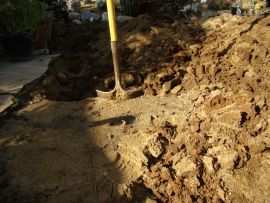 |
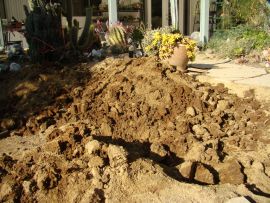 |
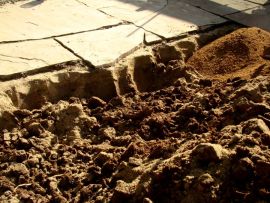 |
| Step 2: |
Add amendment. In Southern California, we use
Decomposed Granite, which is just that and is mined for use
as a top dressing for places that would otherwise be muddy.
For succulent plant growers, it is soil amendment. Any inert
rock or hard fired clay will work. We add an equal amount to
that soil that has been tilled up. |
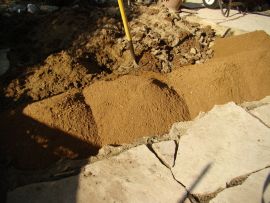 |
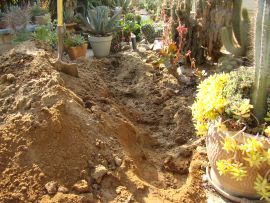 |
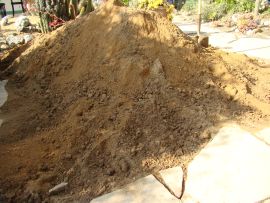 |
| Step 3: |
I mix the DG and soil by simply moving it from
one side to the other. When it is time to rake it back into
place, it is well mixed. Then begins the fun. In 10 or so
beds in our garden, each has a different border. Some have
none, just sloped back from the existing soil level while
others have formal edges. In this case, I've used the removed
flag stone, cut it to size and dry-stacked it. |
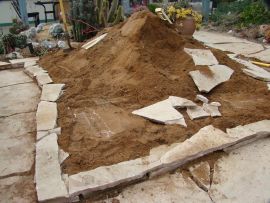 |
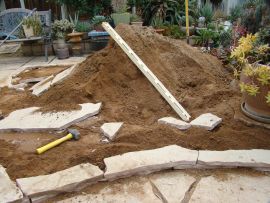 |
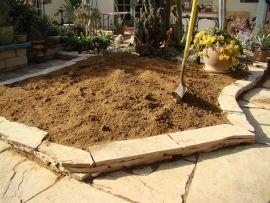 |
| Step 4: |
One pre-planned item in this bed is a 10 year
old pot with succulents growing in it. It has a separate irrigation
line, For this bed, I've used a soft pipe supply line and micro
sprinklers. |
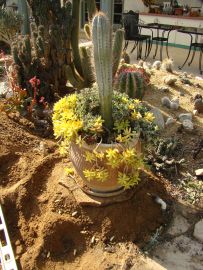 |
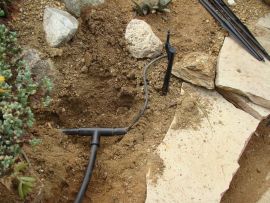 |
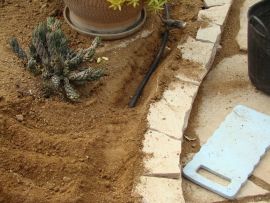 |
| Step 5: |
While we have some idea as to what plants will
be in a given bed, I never pre-slect any until the bed is complete.
The plants may or may not look right in the completed space.
I've saved back enough of the DG to top dress the entire bed
to a depth of about 1". This gives the planting a "deserty"
look and completely suppresses weed germination. |
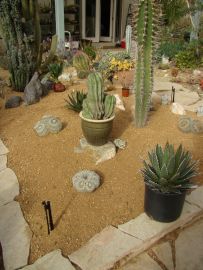 |
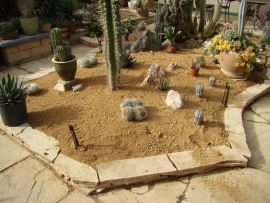 |
|
| 1 Year Later: |
The plants are happy and their minders are happy. |
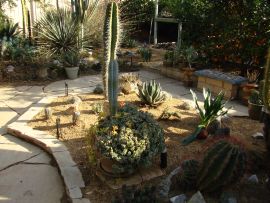 |
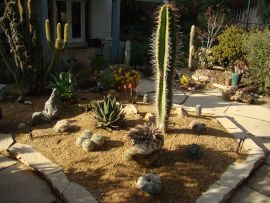 |
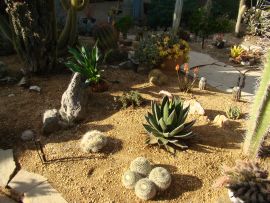 |








